New study highlights PFAS pollution from Joint Base Cape Cod in Falmouth, Mashpee waters
Editor's note: This story was updated on Dec. 15, 2023, to correct information about contaminated water samples.
MASHPEE — A new study detailing the scope of so-called “forever chemicals” in private groundwater wells near military bases across the country has found 17 water samples from wells near Joint Base Cape Cod are contaminated with per- and polyfluoroalkyl substances, also known as PFAS, a fact base officials said they have been aware of and have been addressing for some time.
The study, released Wednesday by the Environmental Working Group, a nonprofit focused on advocating for environmental policy reform, said the U.S. Department of Defense has been slow to respond to PFAS contamination, which the group said has been detected in 2,805 water samples from private wells near 63 military bases in 29 states.
The number of contaminated wells near bases is likely much higher, said Jared Hayes, a senior policy analyst for the Environmental Working Group who authored the study,
“We know that PFAS has been detected at 455 bases and counting, and there are more than 700 different bases across the U.S.A.,” Hayes said. The 2,805 water samples "is going to be a drop in the bucket,” he said.
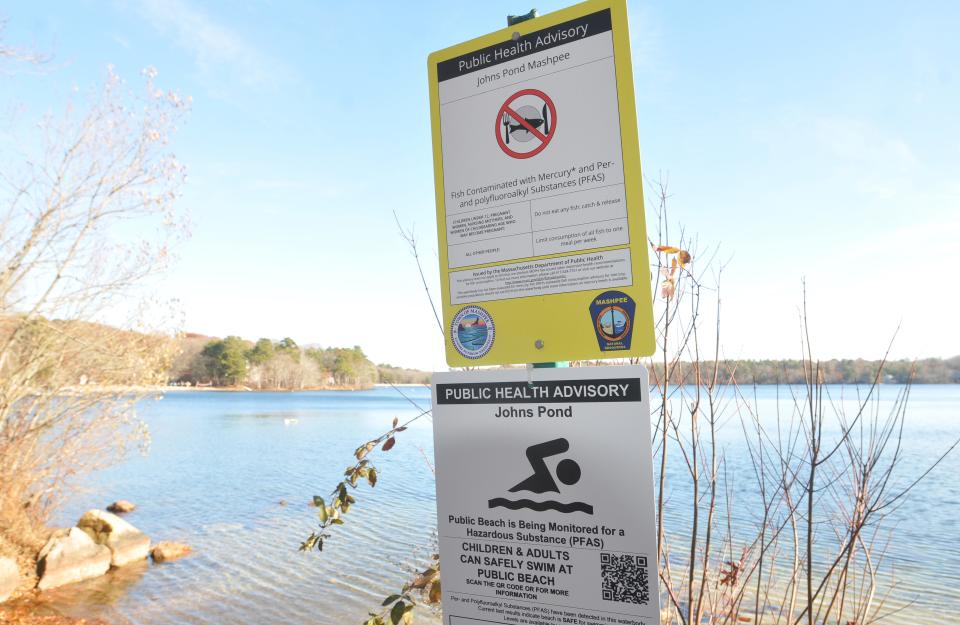
Joint Base Cape Cod, towns and PFAS
A large PFAS plume originating from the Otis Air National Guard Base portion of the base has been spreading through the groundwater, down-gradient toward North Falmouth and Mashpee, for decades, said Rose Forbes, remediation program manager for the Air Force Civil Engineering Center on Joint Base Cape Cod.
The cause has been linked to the 1970s, Forbes said, when the site was used as a firefighting training area and the use of foams containing PFAS was ubiquitous.
“From 1970 to 1985, they used primarily the AFFF foam that has PFAS,” she said, referring to the commonly used aqueous film forming foam that is no longer used on the base. “There were multiple training events with lots of foam used."
Eventually, the PFAS got into the groundwater through precipitation, Forbes said.
It was not until 2015 that PFAS was identified as a containment and remediation efforts began. Since then, Forbes said they have sampled 19 private wells on an annual basis in Falmouth and Mashpee, with one well in Falmouth getting sampled on a semi-annual basis.
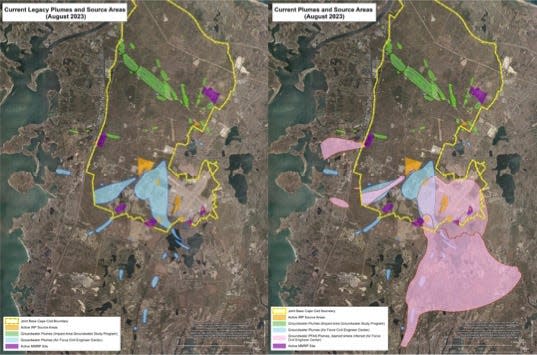
“You wouldn’t want to drink the water there,” Forbes said, referring to the areas affected by the Mashpee and Falmouth plume. “But nobody is drinking the water."
She added that 123 housing units have been connected to municipal water, and affected public supply wells now have wellhead treatment.
The plume is as large and diffuse as it is because it is traveling in the aquifer and through Johns Pond and Ashumet Pond, which diffuses the PFAS and causes it to spread further and wider, Forbes said. The ponds are safe for recreational activities, according to the state Department of Public Health.
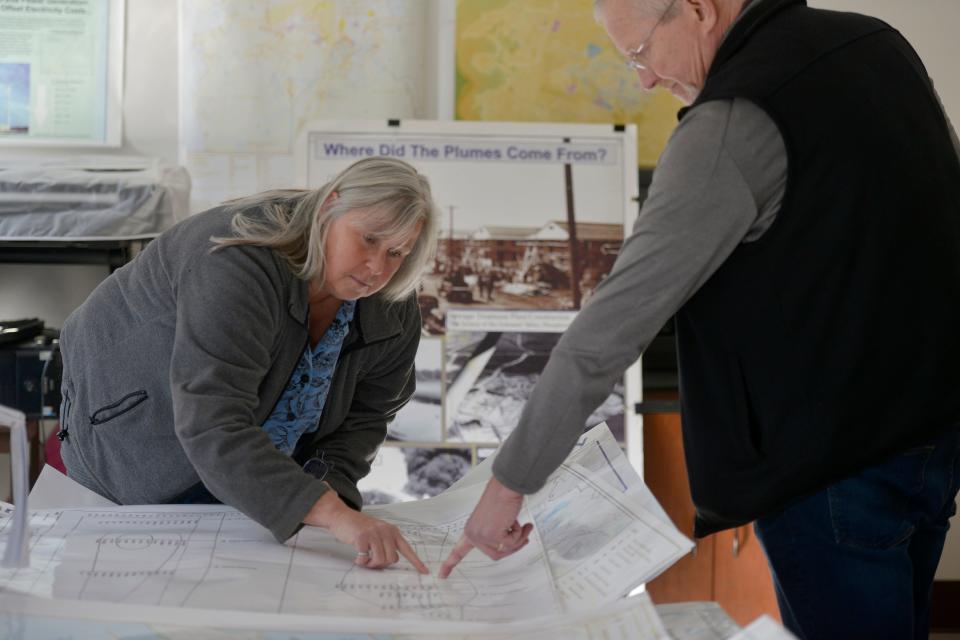
In Mashpee, three out of the seven municipal wells the town operates had been affected by the plume, and all three were taken offline, Mashpee Water District Manager Andy Marks said. One has been brought back to working order and has been online for three years, while the other two have remained offline with treatment having just begun on Nov. 2.
Only one well in Falmouth has been affected, said Mike Reghitto, chief water treatment plant operator in Falmouth. He said the Air Force covered the cost of remediation.
The levels of PFAS varies at the Falmouth well throughout the year, Reghitto said, because the town only uses it seasonally. He said when they turn it on in the spring, the levels can sometimes be around 80 parts per trillion, decreasing to around 20 once the well is switched on.
“We do a lot of monitoring for PFAS year-round, but obviously, we’re keeping an eye on it,” Reghitto said. “We've been fortunate thus far, and we’re keeping our fingers crossed it doesn't become an issue for any of our other sources.”
Study and health impacts
Termed “forever chemicals” because of their resiliency and propensity to spread — especially through groundwater — PFAS pose significant health risks, as even the smallest trace amounts could negatively affect an individual's health, Hayes, with the Environmental Working Group, said.
Hayes said the Department of Defense has a policy of providing clean drinking water to communities near military installations where PFAS levels are above 70 parts per trillion.
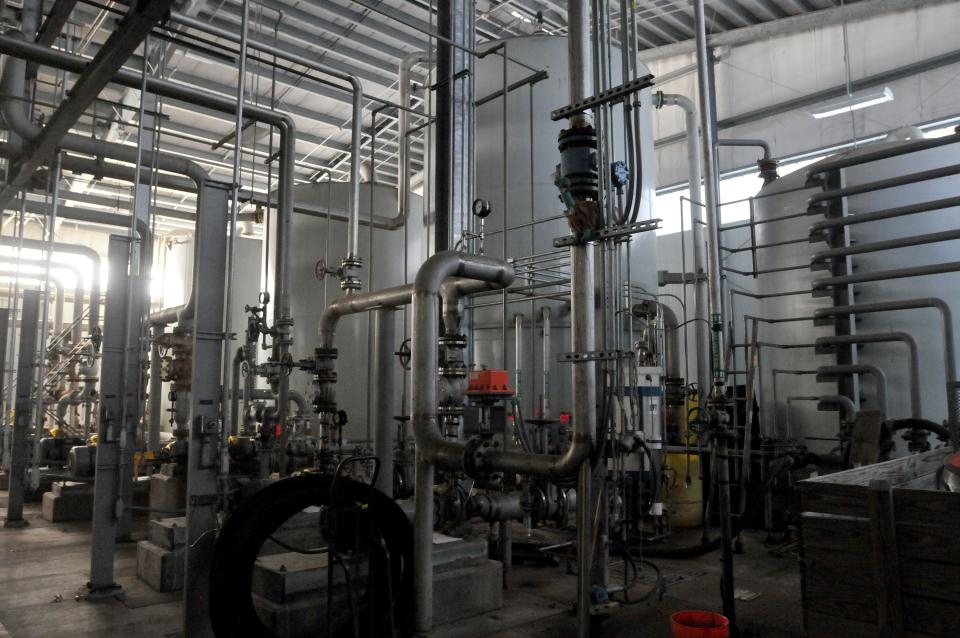
Joint Base Cape Cod has distributed bottled water to one property in Falmouth and one property in Mashpee, Douglas Karson, Air Force Civil Engineering Center Community Involvement Lead, said.
“Everybody else, we’ve connected to municipal water lines,” Karson said.
The Massachusetts Department of Environmental Protection, on the other hand, implemented a public drinking water standard of 20 parts per trillion in October 2020.
Despite the disparity in drinking water standards, the U.S. Environmental Protection Agency has proposed lowering the standards to four parts per trillion — although Hayes said safe levels for drinking water are likely much lower.
“Their (EPA) recommended safe level is well below one part per trillion, it's almost in parts per quadrillion, incredibly small,” he said. “Essentially, they're saying that if you find PFAS in the water, any detectable level of PFAS, it is unsafe. ”
Even very low levels of PFAS contamination have been linked to immune system deficiencies, increased risk of cancer, poor fetal development and reduced vaccine effectiveness, Hayes said.
JBCC cleanup and mitigation
At Joint Base Cape Cod, cleanup and mitigation efforts have been underway to address the spread of PFAS contamination since 2015. But Forbes said nothing can be implemented until the mitigation and remediation proposal plan has been approved by the federal, state and local governments.
“We’ve managed the risk, nobody’s being exposed to the contamination within this plume area,” Forbes said.
A range of possible solutions are being considered, Forbes said, from monitoring to a so-called pump-and-treat method, involving the installation of large, high-powered pumps that pull contaminated groundwater up and process it through large carbon filters before releasing the water back into the ground. Forbes said pump-and-treat, while effective, is costly and requires a lot of construction.
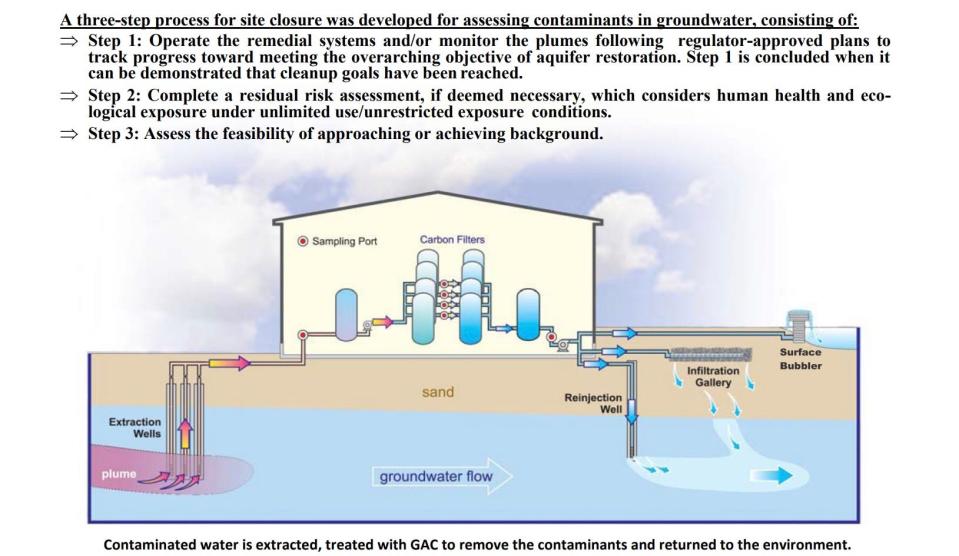
Any proposed plan would need to go out for public comment and gain approval before remediation efforts can be implemented, Karson said.
“It does take a long time,” he said. “But we can do interim actions at any point along that process.”
Mitigation funds have decreased, while contamination has increased
Funding has decreased over the years for mitigation and clean-up efforts, Hayes said, while the level of identified PFAS contamination has increased significantly.
“Just between 2021 and 2022, the total cost to clean up DoD messes on all their bases increased by $8 billion,” Hayes said. “Which is a massive increase, because in 2020, it only increased by a billion.”
In Mashpee, after remediation efforts were underway on the well that has since been reactivated and cleared for use, Marks, the water district manager, said two other wells were identified as having PFAS contamination levels at 23 and 35 parts per trillion. However, because of the federal regulatory standard of 70 parts per trillion, Marks said the federal government was initially reluctant to fund the project.
“It took some convincing to get the federal government to fund that site, but eventually they agreed to it,” Marks said. “It took a lot longer than it normally would have to build the filters, but we finally turned it on and we’re finally back to normal as far as our capacity to pump water.”
Walker Armstrong reports on all things Cape and Islands, primarily focusing on courts, transportation and the Joint Base Cape Cod military base. Contact him at WArmstrong@capecodonline.com. Follow him on Twitter: @jd__walker.
Thanks to our subscribers, who help make this coverage possible. If you are not a subscriber, please consider supporting quality local journalism with a Cape Cod Times subscription. Here are our subscription plans.
This article originally appeared on Cape Cod Times: New study points to PFAS contamination from Joint Base Cape Cod

